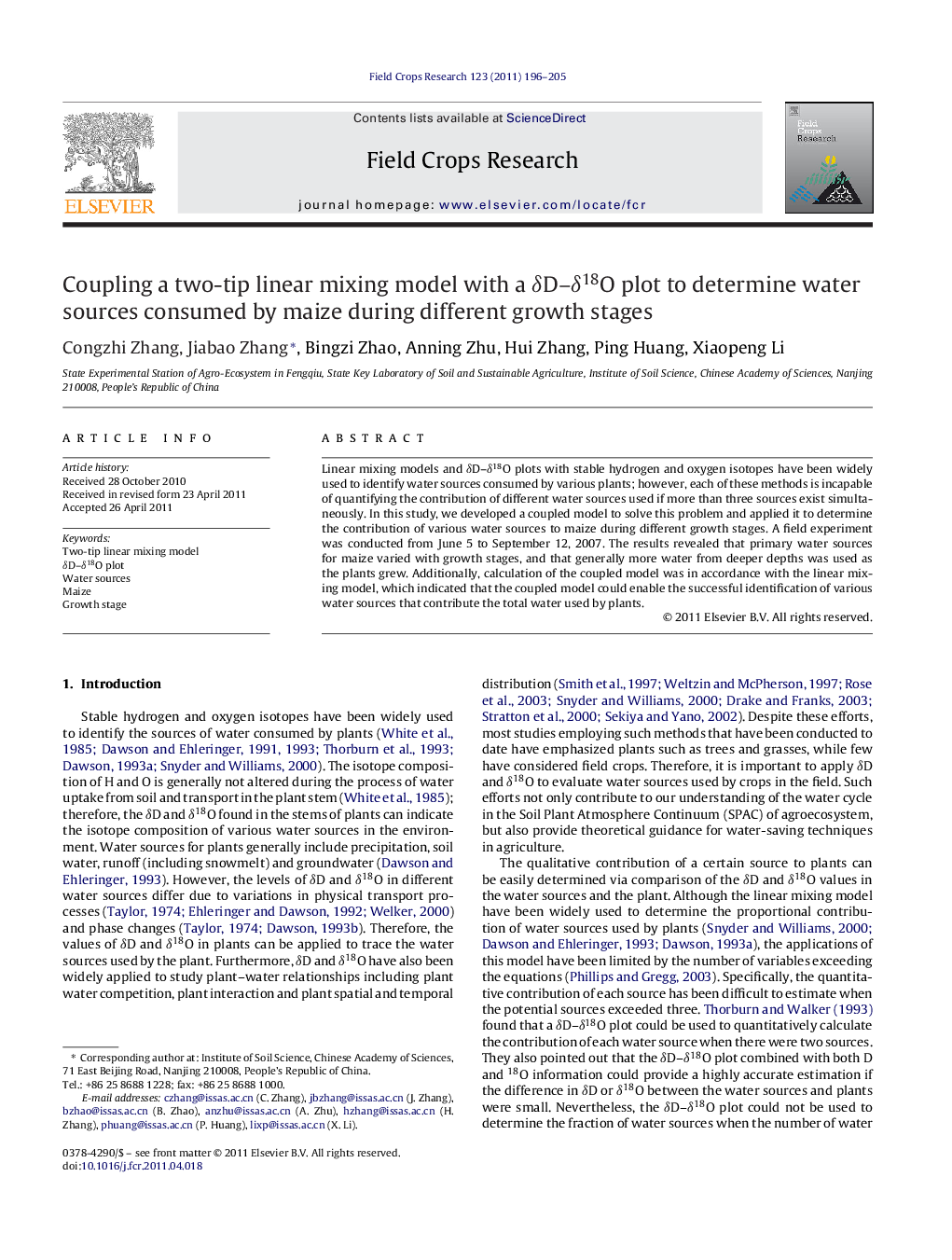| Article ID | Journal | Published Year | Pages | File Type |
|---|---|---|---|---|
| 4510546 | Field Crops Research | 2011 | 10 Pages |
Linear mixing models and δD–δ18O plots with stable hydrogen and oxygen isotopes have been widely used to identify water sources consumed by various plants; however, each of these methods is incapable of quantifying the contribution of different water sources used if more than three sources exist simultaneously. In this study, we developed a coupled model to solve this problem and applied it to determine the contribution of various water sources to maize during different growth stages. A field experiment was conducted from June 5 to September 12, 2007. The results revealed that primary water sources for maize varied with growth stages, and that generally more water from deeper depths was used as the plants grew. Additionally, calculation of the coupled model was in accordance with the linear mixing model, which indicated that the coupled model could enable the successful identification of various water sources that contribute the total water used by plants.
► Development of a coupled model to estimate the relative contribution of an unlimited number of different water sources to plant growth. ► Application of the coupled model to determine the relative contribution of each water source to maize during different growth stages. ► Proposed general applicability of the coupled model to determine plant water sources in different ecosystems.
